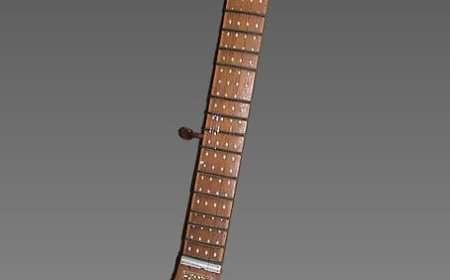Lyre Facts for Students - Learn About This Ancient String Instrument
Explore the lyre an ancient string instrument from Greece and beyond. Learn about its history, parts, how it was played, and why it’s still inspiring music today.

🪕 All About the Lyre
🥇 Introduction
The lyre is a small, elegant string instrument with deep roots in ancient music, poetry, and mythology. Often seen in pictures of Greek gods and poets, the lyre was used thousands of years ago to accompany songs, stories, and religious ceremonies. Its soft, harp-like sound and simple design make it a fascinating piece of musical history that's still played today in reconstructions, early music ensembles, and educational programs.
🎶 What Is a Lyre?
The lyre is an ancient plucked string instrument that looks a bit like a small harp. It has a wooden frame, a soundbox, and a yoke (crossbar) connecting two curved arms. Between the soundbox and yoke are strings that are plucked with fingers or a plectrum (a type of pick).
The lyre usually has 7 to 10 strings, though some had more. It's held in the lap or against the body, and the strings are tuned to produce a diatonic scale (like the white keys on a piano).
The lyre is known for its delicate, ringing tone and was mostly used to accompany singing and storytelling rather than loud, solo performances.
🧩 Parts of the Lyre
Though it looks simple, each part of the lyre plays a role in its sound and style:
-
Soundbox - The hollow wooden body that amplifies the sound
-
Arms - Two vertical posts that rise from the soundbox
-
Yoke (Crossbar) - The horizontal piece connecting the two arms
-
Strings - Usually made from gut (animal intestines), stretched between the yoke and body
-
Bridge - A small piece of wood resting on the soundbox to lift and space the strings
-
Tuning Knobs or Pegs - Used to adjust string pitch
-
Plectrum - A small tool (like a pick) used for plucking the strings
In ancient times, lyres were made from wood, animal horn, and even turtle shells, depending on the culture.
⚙️ How Does the Lyre Work?
The lyre makes sound when the strings are plucked, causing them to vibrate. These vibrations travel through the bridge into the soundbox, which amplifies the sound so it can be heard clearly.
Each string plays one pitch, and the player can tune them to different notes. Some lyres were tuned in pentatonic or diatonic scales, and early musicians used them to accompany poems, hymns, and simple melodies.
The lyre was easy to carry and didn't need much finger strength, making it ideal for singers, travelers, and students.
📜 History of the Lyre
The lyre dates back over 4,000 years, with early versions found in Mesopotamia, Egypt, and ancient Greece.
-
In Sumer (modern-day Iraq), lyres were built with elaborate decorations and used in religious ceremonies.
-
In ancient Greece, the lyre was a symbol of education, poetry, and art. It was associated with the god Apollo, and young students learned to play it in school.
-
Homeric poets used the lyre to accompany epic stories like The Iliad and The Odyssey.
-
In ancient Rome, the lyre continued to be played in homes and public gatherings.
The lyre slowly faded from popular use but inspired the development of harps, lutes, and other stringed instruments in medieval Europe.
🥁 Famous Lyre Players (Historical & Mythical)
-
Apollo - The Greek god of music and poetry, often shown playing a golden lyre
-
Orpheus - A mythical musician who could charm anyone with his lyre playing
-
Terpander - A real Greek composer credited with early lyre music theory
-
Sappho - A famous poetess who likely used a lyre to accompany her lyrical poetry
-
Homeric Bards - Poets who told epic tales with the lyre's support
-
Modern Performers - People today like Michael Levy recreate ancient lyre music based on research and ancient texts
🎶 Learning to Play the Lyre
Modern lyres are being rebuilt and played by students, historians, and musicians interested in ancient music. Learning to play involves:
-
Tuning the strings to a scale (like C-D-E-F-G-A-B)
-
Plucking with fingers or a plectrum
-
Learning simple melodies, drone accompaniment, and chord strumming
-
Exploring ancient scales and musical styles
Some teachers use lyres in Waldorf education because of their gentle tone and simplicity. The lyre is also a fun way to learn about history and music together.
😄 Fun Facts About the Lyre
-
The oldest known lyre comes from Ur (Iraq) and is over 4,500 years old!
-
The lyre was used by Greek schoolchildren to learn music and discipline.
-
The lyre is often pictured in ancient art, coins, and mythology.
-
Some lyres were made from turtle shells and animal horns.
-
The Biblical King David is said to have played a lyre-like instrument.
-
Today, you can buy modern lyres made from wood, tuned to various scales.
-
The word "lyric" comes from the lyre, since it accompanied poetry!
👧 Kid-Friendly Summary
The lyre is a small string instrument from ancient times. It looks like a tiny harp and makes gentle music when you pluck the strings. People in Greece, Egypt, and Mesopotamia used it to play songs, tell stories, and honor the gods. Even today, people still enjoy learning and playing the lyre.
📚 Vocabulary Words
Lyre – An ancient string instrument played by plucking the strings
Soundbox – The hollow body that makes the sound louder
Yoke – The crossbar that holds the strings in place
Plectrum – A tool (like a pick) used to pluck strings
Diatonic Scale – A set of 7 notes like the white keys on a piano
Drone – A steady note played under the melody
Mythology – Traditional stories, especially about gods and heroes
Apollo – The Greek god of music, often shown with a lyre
❓ Interactive Quiz (8 Questions)
1. What kind of instrument is the lyre?
A. Percussion
B. Wind
C. String
D. Brass
2. Where did the lyre first appear in history?
A. Ancient China
B. Mesopotamia
C. South America
D. Medieval Europe
3. What part of the lyre holds the strings across the top?
A. Frets
B. Bow
C. Yoke
D. Drumhead
4. How do you play the lyre?
A. Blow air into it
B. Hit it with sticks
C. Pluck the strings
D. Rub it with a bow
5. Which Greek god is often shown with a lyre?
A. Zeus
B. Apollo
C. Poseidon
D. Hades
6. What kind of sound does the lyre make?
A. Loud and booming
B. Gentle and ringing
C. Sharp and metallic
D. Flat and low
7. What were lyres used for in ancient times?
A. Cooking
B. Painting
C. Music and storytelling
D. Building
8. What does the word “lyric” come from?
A. Lyre
B. Lute
C. Piano
D. Harp




















































